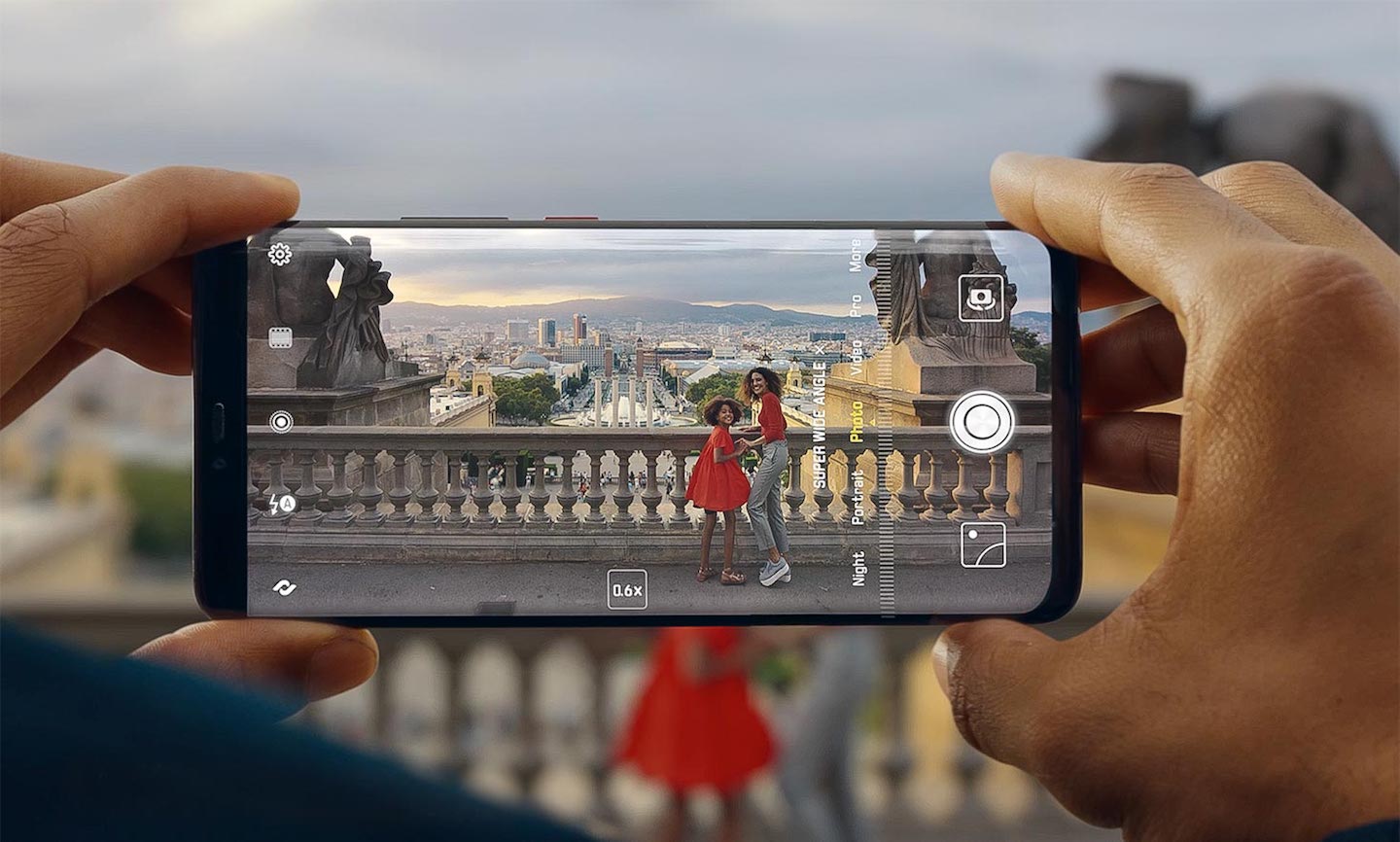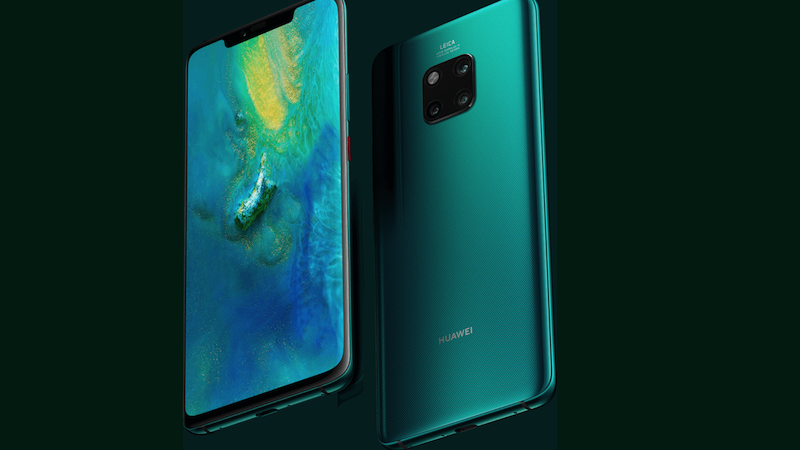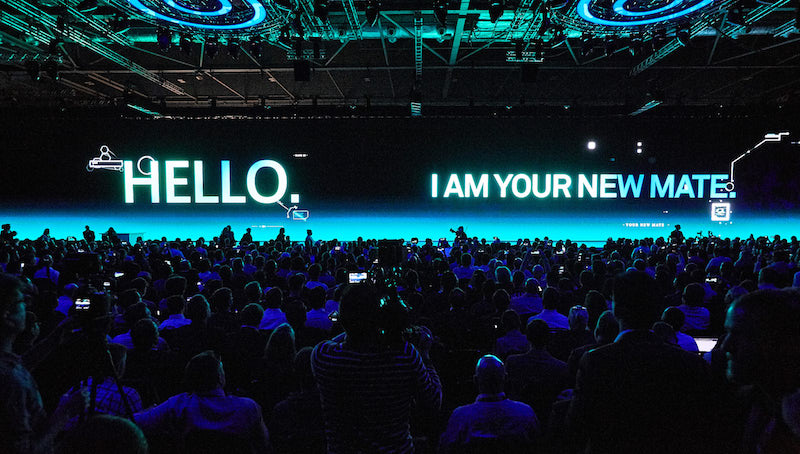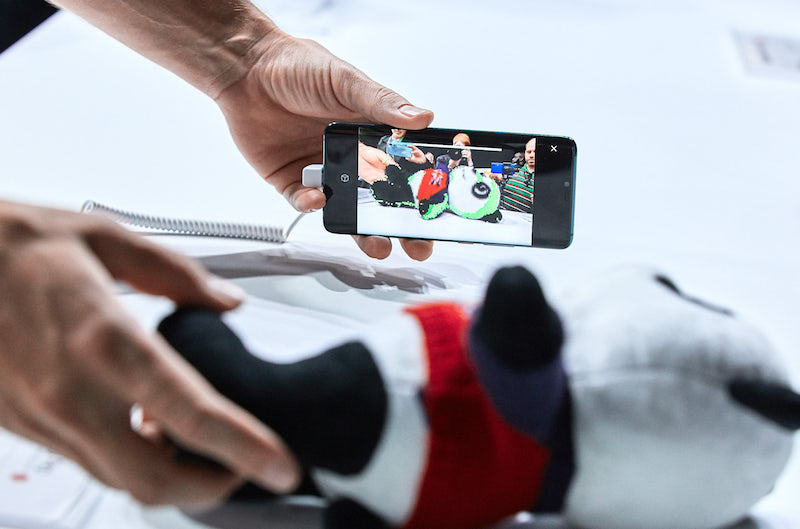
Huawei's latest flagship is a leap in the future of smartphones (Photo: Huawei)
A misty rain, like the soft spray of a lawn sprinkler, had begun to fall when we boarded the London Eye. The usual gloomy, damp autumn weather obscured any hint of the sun, making the view of the Palace of Westminster from above look like a scene straight out of 007’s Spectre. We attempted an aerial photo of the vista with our three-year-old smartphone, only to be defeated by a rather blurry shot as gusts of wind and rain lashed the sides of our glass capsule. But when we whipped out the new Huawei Mate 20 Pro, the buildings in the far distance came into crisp focus and their colours popped slightly under the overcast sky. Taking photos for the rest of our trip, despite the downpour, was no longer met with groans.
There was a time when Apple and Samsung were guaranteed pole position in the smartphone market but more brands from China, like Shenzhen-based Huawei, are overthrowing top-of-the-line titans at whiplash speed. To broaden the reach of its business overseas, Huawei tapped the marketing power of stars such as footballer Lionel Messi, actress Scarlett Johansson and, most recently, Wonder Woman’s leading lady Gal Gadot. Huawei is still determined to position itself as the tech heavyweight that gave Apple a run for its money, which explains the cheeky move of distributing power banks at Singapore’s iPhone XS launch to remind buyers that its phones have a longer battery life. As the saying goes, “The flip side of a problem is an opportunity”. Or, in this case, a clever jab.

With a market share of 15.8%, behind Samsung, according to International Data Corp figures, Huawei has used a tremendous amount of marketing muscle to attract tech-addicted millennials. But it would be wrong to think the world’s top cellular equipment maker lacks substance. The Huawei Mate 20 series launch at ExCel, a 100-acre exhibition centre in Custom House, East London, was proof that the Chinese firm, too, can deliver class-of-the-industry keynotes and product demos with aplomb.
Having piqued the interest of smartphone users with its teaser campaign that promised “A Higher Intelligent is Coming”, Huawei finally unveiled its big secret in a futuristic-looking room jam-packed with at least 2,000 eager journalists, bloggers and industry experts. A digital projection of the Mate 20’s square, 2x2 grid camera swivelling on the cavernous screen set the tone for what was to come — the next big break in technology.

Speculation had reached a frenzied pitch when Huawei Technologies Consumer Business Group CEO Richard Yu took to the stage, immediately billing the Mate 20 series as the best “mate” for consumers. “Smartphones are an important entrance to the digital world. The Mate 20 series is designed to accompany and empower users to enjoy a richer, more fulfilled life with their higher intelligence, unparalleled battery lives and powerful camera performance,” he declared.
Huawei’s key aim is not only to stand out in a bland array of indistinguishable mobile devices but to beat them. The litany of specs reads like poetry to tech geeks. Powered by the Kirin 980 processor — a high-performance mobile AI chipset that significantly trumps last year’s Kirin 970 — and a more polished EMUI 9.0 Android Pie-based operating system, the Mate 20 Series also boasts a more elaborate CPU to flit between heavy and light tasks with unprecedented efficiency. And because size does matter, Huawei’s latest flagships come in three models — the 6.53in Mate 20; the smaller but shinier 6.39in Mate 20 Pro with AMOLED screen and the largest of them all, the 7.2in Mate 20 X with HDR display.

And if you thought Huawei’s growth had peaked, the higher-end Mate 20 Pro is set to keep sales roaring. The Chinese firm has catapulted the device into an enviable position, furnishing it with all the bells and whistles and the niftiest technology. It is the first smartphone in the world to support the 4.5G LTE Cat.21 standard, allowing download speeds of up to 1.4Gbps. Housing a large, high-density 4200mAh battery that supports 40W Supercharge, the phone, with excellent stamina between charges, can go from zero to 70% in 30 minutes. To put things into perspective, our battery lasted a good 30 hours with heavy usage of emailing, gaming, Instagramming and watching a 40-minute episode of Maniac on Netflix.
Given the pace of technological change, catching technology waves is not enough — you need to ride them. Surfing into augmented reality success, Huawei introduced the 3D Live Object scanner in the Mate 20 Pro, a feature that allows real-world objects to be scanned and animated in a mixed reality environment using Google’s AR Core technology. To illustrate just how impressive and fun this technology is, a Huawei executive scanned a stuffed panda and then showed it dancing and kungfu-ing with a live person in front of the rapt audience.
A torrent of smartphone choices on the market means that one or two negative qualities can be enough for a user to switch camps. To outdo a sea of competitors, smartphone designers have dreamt up an ingenious response, or a deal-breaker for most avid photographers, to the phone-camera threat — cram more lenses and pixels into a single device.

It is no secret that smartphone brands are bullish about their built-in cameras, bedecked with extra lenses, powerful sensors and customisable settings, putting within an amateur’s reach the ability to produce professional-quality images. Huawei, however, did not stop there. It partnered Leica — the German camera manufacturer favoured by photography icons like Henri Cartier-Bresson and Annie Leibovitz — to equip the Mate 20 Pro with the world’s first Ultra Wide Angle Leica Triple camera and AI Cinema Mode, which includes a colour-isolating effect. Think Sin City.
To find out if Huawei’s camera made the grade, we took the Mate 20 Pro to the streets. Packed with a 40MP wide angle lens and a 20MP ultra wide-angle camera, the smartphone managed to capture the entire length of the Tower Bridge snugly in one frame. Dark clouds began to part as we travelled to the heart of London — which architectural critic Ian Nairn once described as “a definition of Western civilisation in a single view”. It was a good opportunity to put the 8MP telephoto camera — part of the Mate 20 Pro’s trio of lenses — to the test.
If the wide-angle lens of the Mate 20 Pro delivered photos of Gothic Revival edifices and Victorian marvels in all their stately glory, the telephoto camera zeroed in on their intricate details from a distance. For example, a zoom-in on Westminster Abbey offered a clear, close-up study of its soaring pointed arches, ribbed vaulting and delicate stained-glass windows, even from across the street. When darkness descended, the phone still performed competently under low light with the impressive Night Mode. It took a while to render a clean and sharp image of Chinatown when we ambled along the streets for a steaming bowl of noodles, but the final result, given the scant amount of light, retained the level of sharpness that only the use of a tripod could deliver.

The niggling downside of the AI-assisted camera is that Huawei does not offer an option to remove its processing for a more natural outcome. The colours of the photos may seem more exaggerated than intended, leaving you with a less faithful and realistic representation of your objects. You can, of course, alter them to be more true to life if you would rather the AI did not interfere. So breathe a sigh of relief, professional shutterbugs — smartphones have not rendered the DSLR obsolete just yet.
Despite the leaps forward in the camera department, improvements for longer battery life have unfortunately remained sluggish. As our day neared the end, watching our screen fade slowly to nothingness was more depressing than eating soggy fries in the land of fish and chips. But not all hope was lost with the Mate 20 Pro’s reverse wireless charging. A fellow journalist pressed his device against ours and it automatically transferred power. Resuscitating our phone took a while but it was better than roaming the city at midnight with our phone battery completely conked out.

To call a smartphone “revolutionary” seems pompous but Huawei’s latest offering, a steep migration from its past incarnations, is decidedly evolutionary. Less than a decade ago, a Huawei smartphone did not even exist. Now it is one of the top three best-selling brands in China.
The future of smartphones, with possibilities and potential that seem more boundless than ever, will be aggressively defined by better clarity, speed and functionality, such as visual processing, cloud computing and 3D imaging. Smartphones will only get smarter, shifting reality and inundating us with app names we will struggle to pronounce. But they will still perform the fundamentals at least: connect us with our loved ones, and, if you live in a windowless room, let you know what the weather is outside.
This article first appeared on Nov 19, 2018 in The Edge Malaysia.


